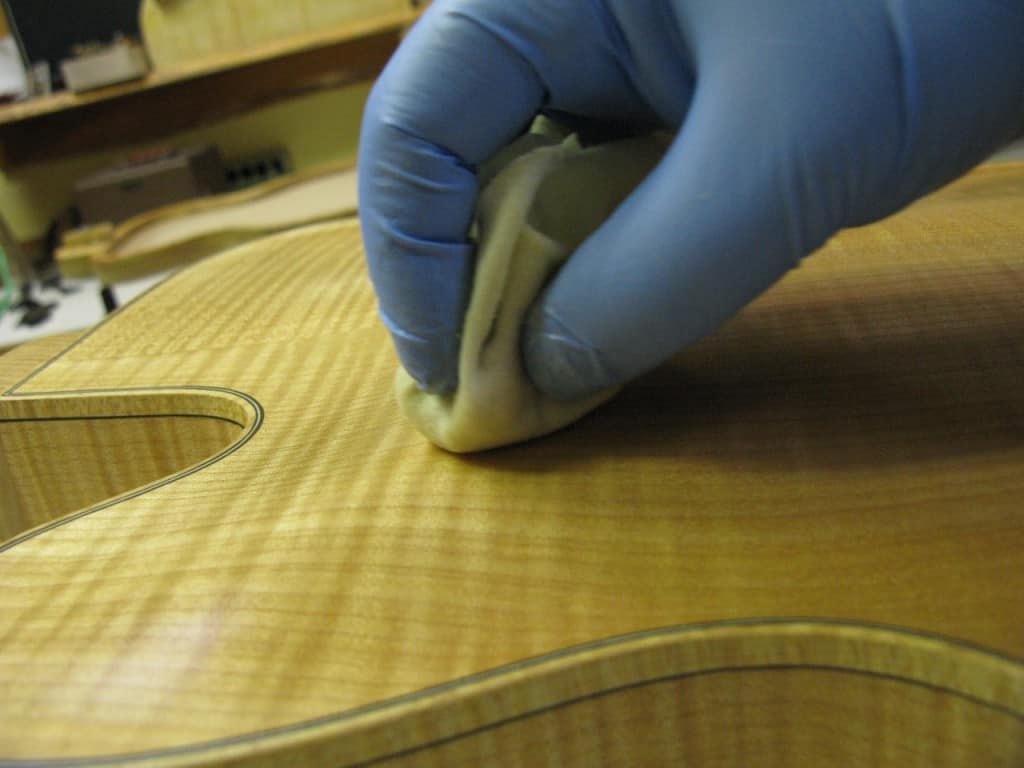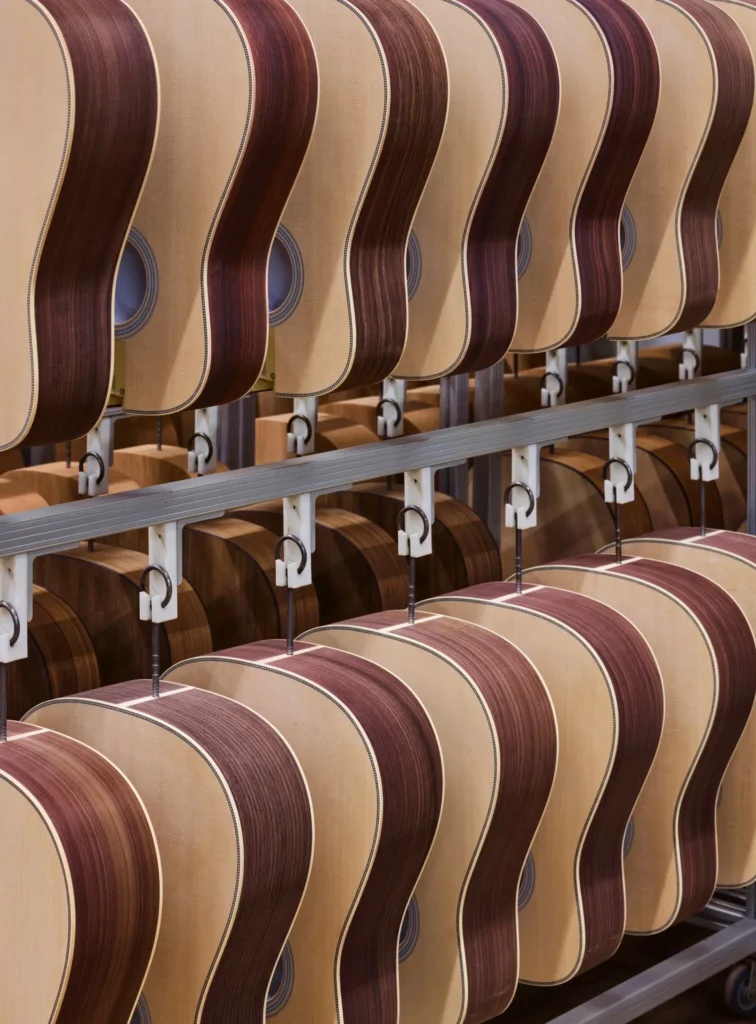Woods for Electric Guitar Bodies: Properties and Applications

The choice of wood in the construction of an electric guitar is a determining factor in its sound, weight, and aesthetics. Each type of wood offers a unique combination of density, acoustic response, and behavior with different finishes. In this article, we explore five woods used in electric guitar bodies: roasted ash, alder, red wood (Bariolé), black limba, and maple.
Two very important factors when choosing woods are density and hardness:
DENSITY: Density plays a very important role in the transmission and resonance of sound in wood, as the denser the wood, the harder it will be, and therefore it will give us a brighter tone. This density is relative according to various factors (species, moisture content, tree location, absorbed minerals, etc.)
HARDNESS: Hardness is the resistance of the wood to wear, scratching, etc. It depends on its density, age, structure, and whether it is worked along or perpendicular to its grain. Generally, slow-grown wood obtains greater resistance than fast-grown wood.
The result of the wood through mechanical elements is to convert a vibration into sound, for which all the component woods of an instrument must be perfectly coupled. In this case, the vibration of the strings is transmitted through the bridge to the wood, where it will “resonate” depending on the structure of that wood. And also vice versa, as the sound of each wood is transmitted through the strings to the pickups. That is why it is sometimes said that we can clearly distinguish the “sound” of each wood.
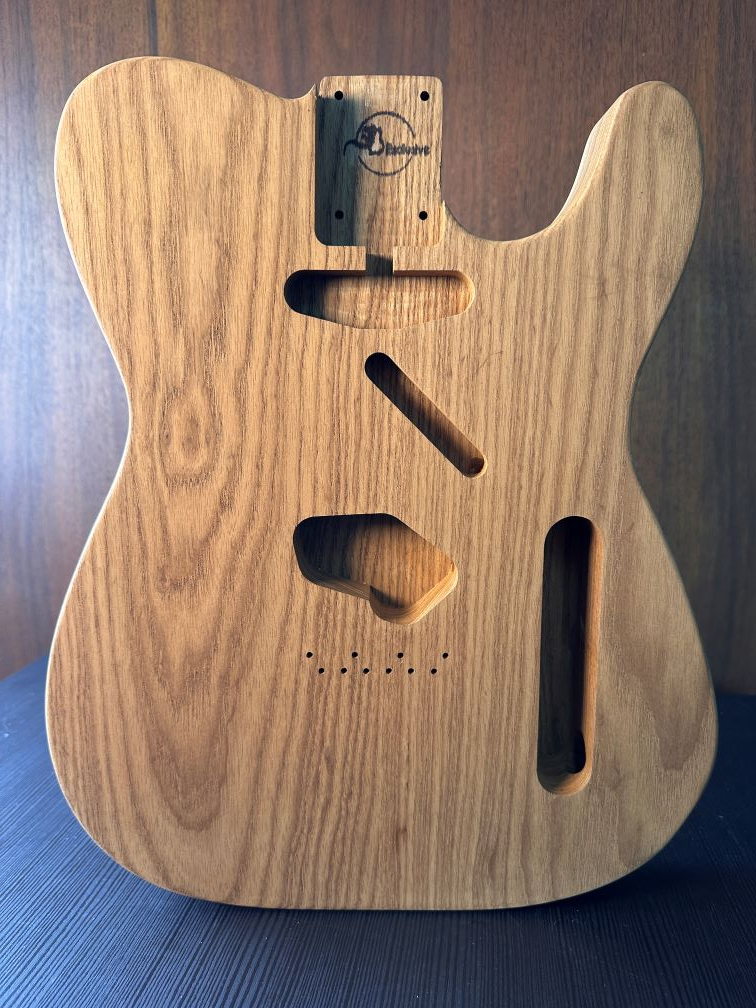
Roasted Ash
Roasted ash is a variant of ash that has undergone a thermal process known as torrefaction or roasting.
- Origin: Primarily North America.
- Density: Between 500 and 700 kg/m³, depending on the degree of roasting.
This treatment removes residual moisture and stabilizes the wood, reducing its sensitivity to changes in temperature and humidity. Thanks to this process, a more resonant wood with improved sustain is obtained, as the reduction of internal moisture and resins optimizes its acoustic response. Its sound is characterized by defined highs and controlled lows, making it an attractive option for guitarists seeking a clear and articulate tone. Brands like Fender have opted for roasted ash in limited edition models, highlighting its stability and reduced weight.
It is used in electric guitar bodies, but due to its stability against changes in humidity and temperature, its use in guitar necks has greatly increased.
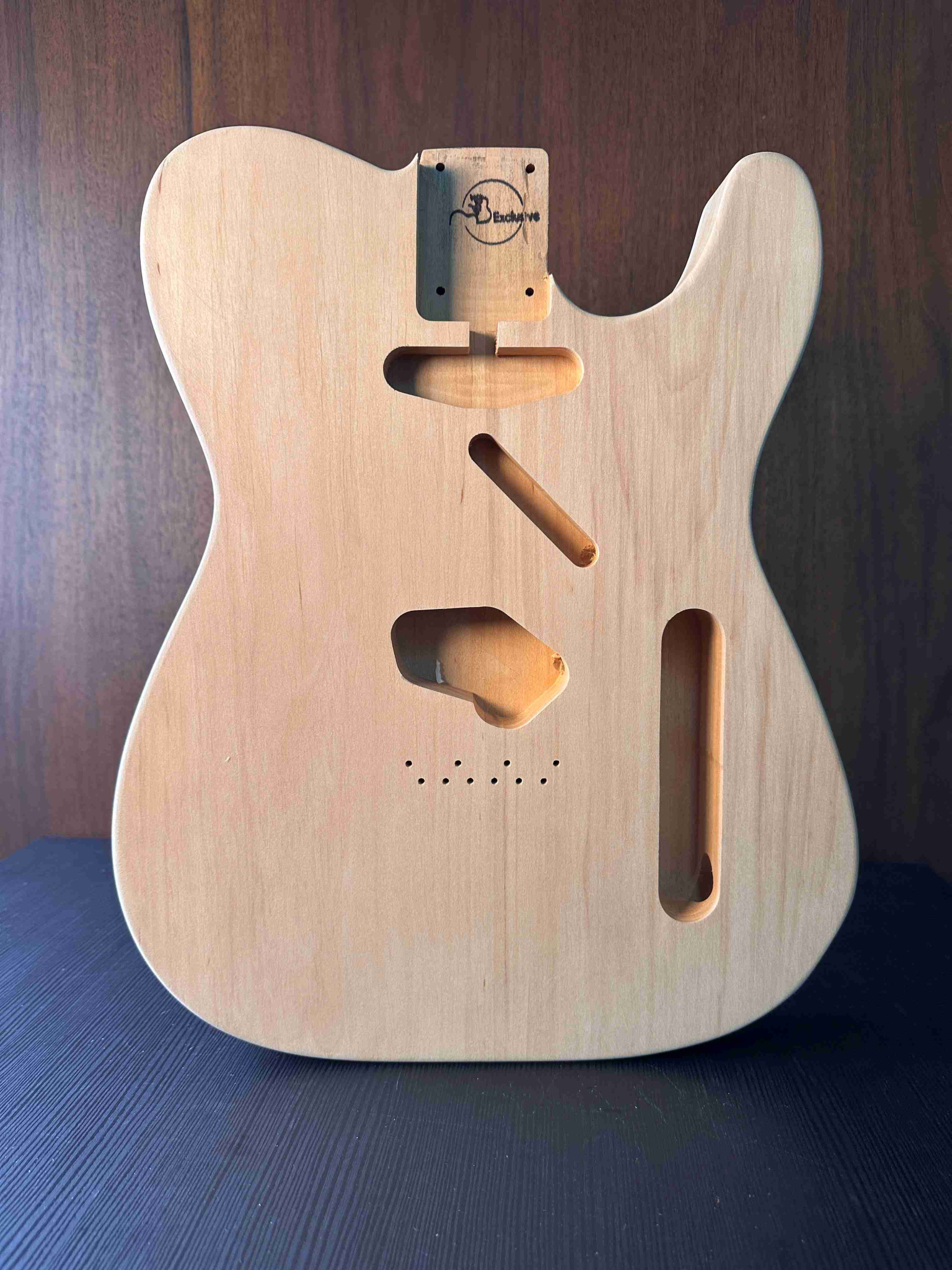
Alder
Alder is one of the most iconic woods in the manufacturing of electric guitars, especially in solid-body models.
- Origin: North America and Europe.
- Density: Approximately 450-500 kg/m³.
Recognized for its balanced sound, alder offers a uniform response across all frequencies, making it a versatile wood for various musical styles. Its tone does not excessively emphasize either the bass or the treble, providing a sonic character ideal for guitars that require tonal flexibility. Since the 1950s, Fender has used this wood in classic models such as the Stratocaster and Telecaster, solidifying its popularity among musicians of diverse genres.
Furthermore, its fine and uniform grain facilitates the application of lacquers and varnishes without the need for excessive pore fillers.

Black Limba (Korina)
Black limba, also known as korina, is the same wood species, but its commercial name varies depending on the manufacturer or the context in which it is used.
- Origin: West Africa.
- Density: Approximately 550-650 kg/m³.
It possesses a tonal response rich in the midrange, with characteristics similar to mahogany, although with greater definition in the highs. Its warm and resonant sound has been utilized in high-end guitars and boutique models. In the 1950s, Gibson popularized its use in innovative models such as the Flying V and the Explorer, calling it korina to differentiate it in the market. Currently, black limba remains a popular choice for its aesthetic appeal and its balanced acoustic response.
Its porous grain may require grain filler beforehand to achieve a uniform finish, making the choice of surface treatment a fundamental aspect in its application.
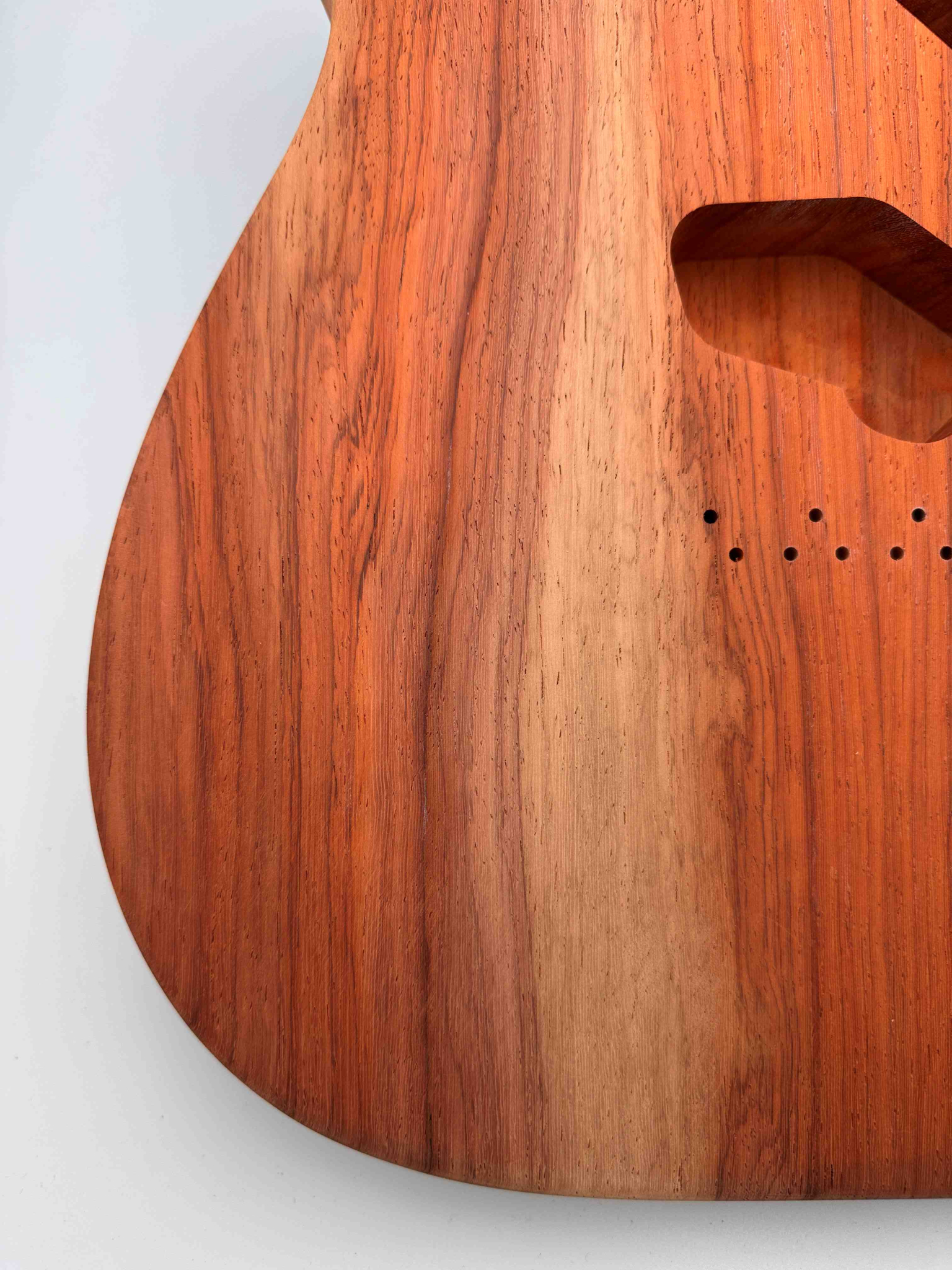
Red Wood (Padouk)
Also known as padauk, red wood is an exotic wood with a reddish hue that darkens over time.
- Origin: Africa and Asia.
- Density: Between 700 and 800 kg/m³.
Its stiffness and high density provide a bright sound with a fast attack response. This type of wood has found its place in custom guitar making and high-end models, due to its striking appearance and outstanding acoustic response. However, padauk may require specific sealers to stabilize its color and prevent surface oxidation, as it tends to darken over time. Its very pronounced grain and resistance make it an attractive option for luthiers looking for visually appealing woods with a wide acoustic range.
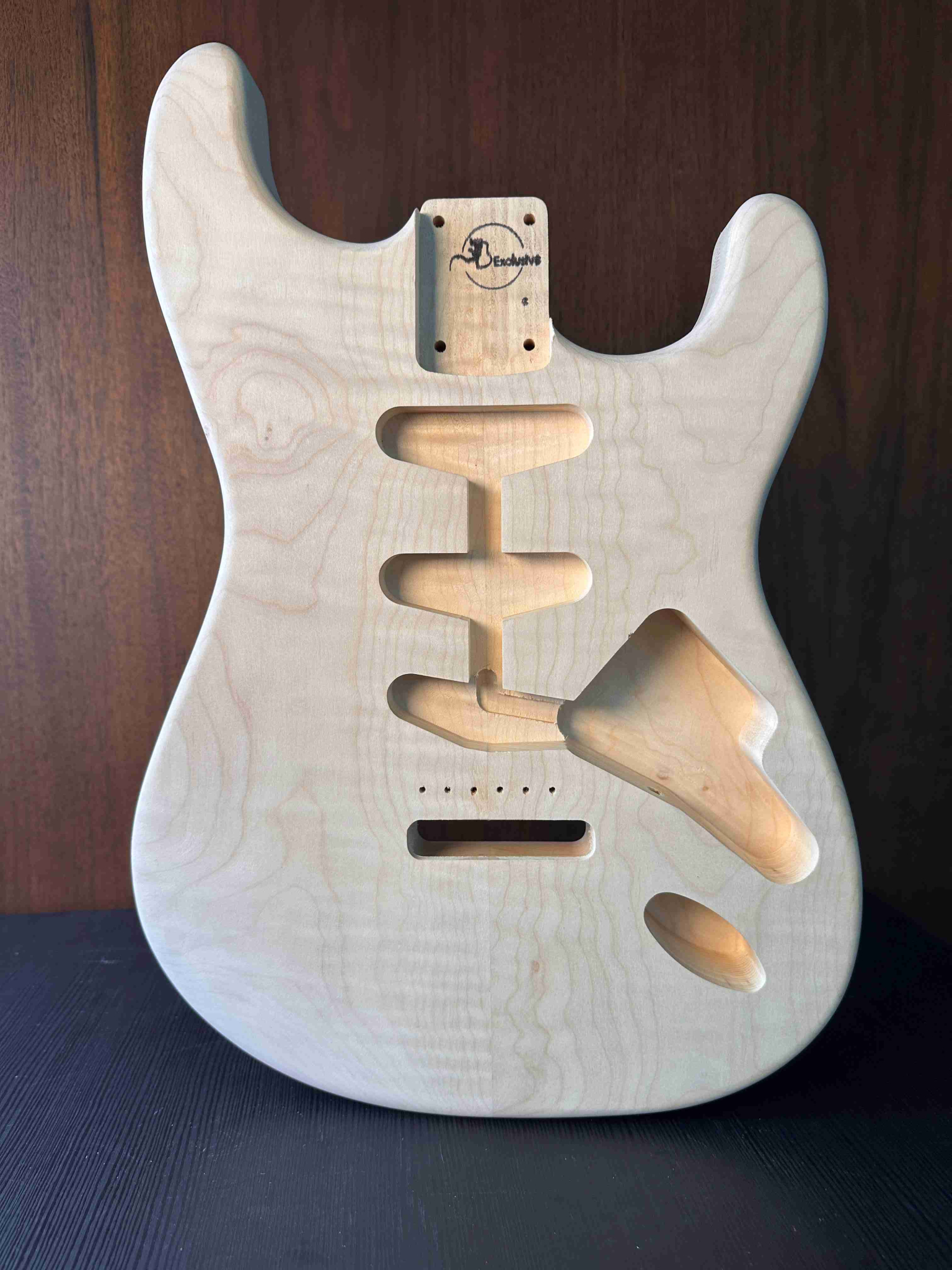
Maple
Maple is known for its hardness and its ability to add brightness to the sound of a guitar.
- Origin: North America and Europe.
- Density: Between 600 and 750 kg/m³.
With a high acoustic response and exceptional sustain, maple has become a recurring choice in electric guitar making. In this case, a distinction is made between Hard Maple, a denser version used in tops and necks, and common maple, which is used in full bodies. In models like the Gibson Les Paul, Hard Maple is combined with mahogany to create a blend of warmth and balanced attack. Furthermore, its closed grain allows for the application of translucent finishes that highlight its grain patterns and flame figures, making it a highly valued wood for its aesthetics and functionality.
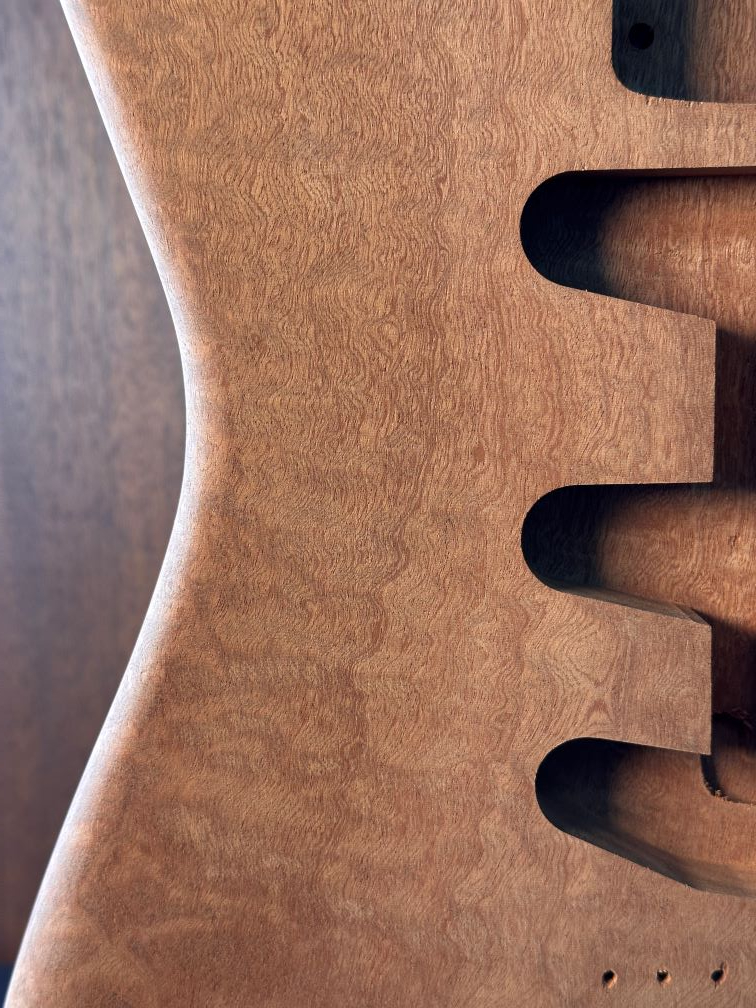
Sapelli Quilted
Quilted sapele is an exotic variation of sapele, characterized by its wavy figure that provides an impressive three-dimensional visual effect.
- Origin: West Africa.
- Density: Between 600 and 700 kg/m³.
Sonically, quilted sapele offers a warm tone with a balanced response similar to mahogany, but with a slightly more pronounced attack. It is used both in full bodies and in tops of high-end guitars, as its aesthetics make it a highly valued option in the boutique market. Its combination of beauty and versatile sound makes it ideal for guitars with translucent finishes.
Relationship between Wood Types and Guitar Construction
The impact of each of these woods on a guitar’s sound varies depending on the instrument’s construction type. In solid body guitars, such as the Fender Stratocaster or Gibson Les Paul, the wood primarily influences sustain and overall tonal response. Dense woods like Hard Maple provide greater attack and clarity, while lighter options like alder offer a more balanced and dynamic tone.
In semi-hollow body guitars, such as the Gibson ES-335, the acoustic properties of the wood become more significant. The use of black limba or roasted ash in this type of construction can enhance the midrange and generate a richer resonance.
On the other hand, in fully hollow body guitars, typical of jazz and blues, the wood plays a determining role in the warmth and resonance of the instrument. Woods like maple or padauk offer a bright sound with greater projection, while korina or ash can provide a deeper resonance.
Sustainability and Availability of These Woods
The use of woods in lutherie not only depends on their acoustic properties but also on their availability and sustainability. Some species have been affected by overexploitation and environmental regulations. Ash, for example, has seen its availability reduced due to the emerald ash borer plague, leading to the search for alternatives or the use of roasted versions to optimize its stability.
On the other hand, black limba and padauk come from regions where forest management is crucial to prevent deforestation. Certifications such as FSC (Forest Stewardship Council) and PEFC (Programme for the Endorsement of Forest Certification) ensure that these woods come from sustainable sources, guaranteeing their long-term availability.
In the case of Hard Maple and alder, their growth in temperate regions facilitates reforestation, making them more accessible and ecological options for instrument manufacturing.
Choosing the Wood and Finish for Your Guitar
Each of these woods offers unique qualities in terms of sound, aesthetics, and ease of working with different finishes. The choice will depend on the character sought in the guitar and the combination with other elements such as pickups and overall construction. NitorLack products allow these properties to be highlighted with finishes specifically designed to optimize the appearance and protection of these woods on electric guitars.
This article has been made in collaboration with Maderas Barber. On their website, you can find a wide selection of specialized woods and finished bodies from the MB Exclusive line ready to work with.

